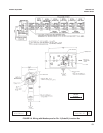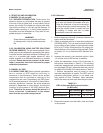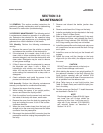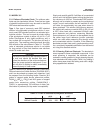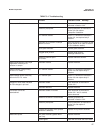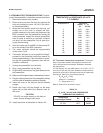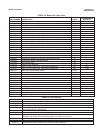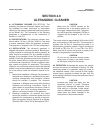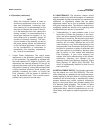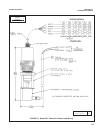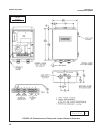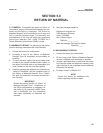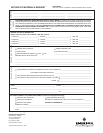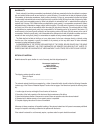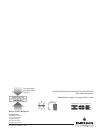
22
4.4 Operation (continued)
NOTE
When the ultrasonic cleaner is used on
some slurry applications (such as car- bon-
ates and phosphates), continuous ultra-
sonic cleaning is not recommended as this
may tend to compact the solids of the slur-
ry on the electrode into a hard, cement like
coating. Instead, it is recommended that a
shock-type treatment be applied (i.e., for
every three hours of operation, employ 30
minutes of ultrasonic cleaning). The inter-
val and duration of the cleaning, as well as
the power setting utilized, are determined
by the individual application. Factors such
as the concentration of carbonates or
phosphates, flow velocities, temperature,
etc., must all be considered.
1. Output Power Adjustment. The output power
adjustment on the ultrasonic generator is located
on the powerstat. The powerstat is adjusted with
the knob marked as PS: (Refer to Figure 4-2), and
determines the cleaning efficiency of the unit by
adjusting the power input of the generator. Proper
adjustment is made by turning the powerstat knob
counter-clockwise (minimum power position) and
gradually increasing the power, by turning the
knob clockwise, until the power is sufficient to
keep the electrode clean. This is usually accom-
plished over a period of several days.
4.5 MAINTENANCE. The ultrasonic cleaner should
operate continuously (with the exception of carbonate
and phosphate slurries) and requires no maintenance,
calibration, or adjustment, except that the power
adjustment should be as low as possible consistent
with good cleaning action. The ultrasonic transducer is
completely sealed and should not be operating while
troubleshooting the sensor or transmitter.
1. Troubleshooting. In case problems arise in the
functioning of either the generator or the trans-
ducer, the entire assembly should be returned to
the factory for servicing. No electronic repair work
of any kind should be attempted in the field, or the
warranty will be voided. Whether the unit is still
under warranty or not, field troubleshooting is not
recommended, and Rosemount Analytical cannot
be liable for operation or safety of equipment that
has been repaired or modified by persons other
than its factory or their trained and authorized
Field Engineers. If your unit’s warranty has
expired, and field troubleshooting is still desired,
waveforms, frequency and voltages can be
obtained directly from Branson Ultrasonic, Eagle
Road, Danbury, CT 06810, (203) 796-0400. The
circuit is fundamentally identical for both the old
and new version.
4.6 REPLACEMENT PARTS. The ultrasonic generator
may be ordered as a unit (P/N 22990-00). The ultra-
sonic transducer is a sealed unit and cannot be conve-
niently repaired in the field. While it is not likely that the
transducer will fail electrically or mechanically, certain
process streams may contain corrosive compounds
which, in time could attack and ultimately destroy the
316 Stainless Steel faceplate. The number of spare
transducers (P/N 2001463) needed on hand as
replacement stock, should be determined on an indi-
vidual basis, with regard to specific application condi-
tions.
MODEL 381pH/ORP SECTION 4.0
ULTRASONIC CLEANER



